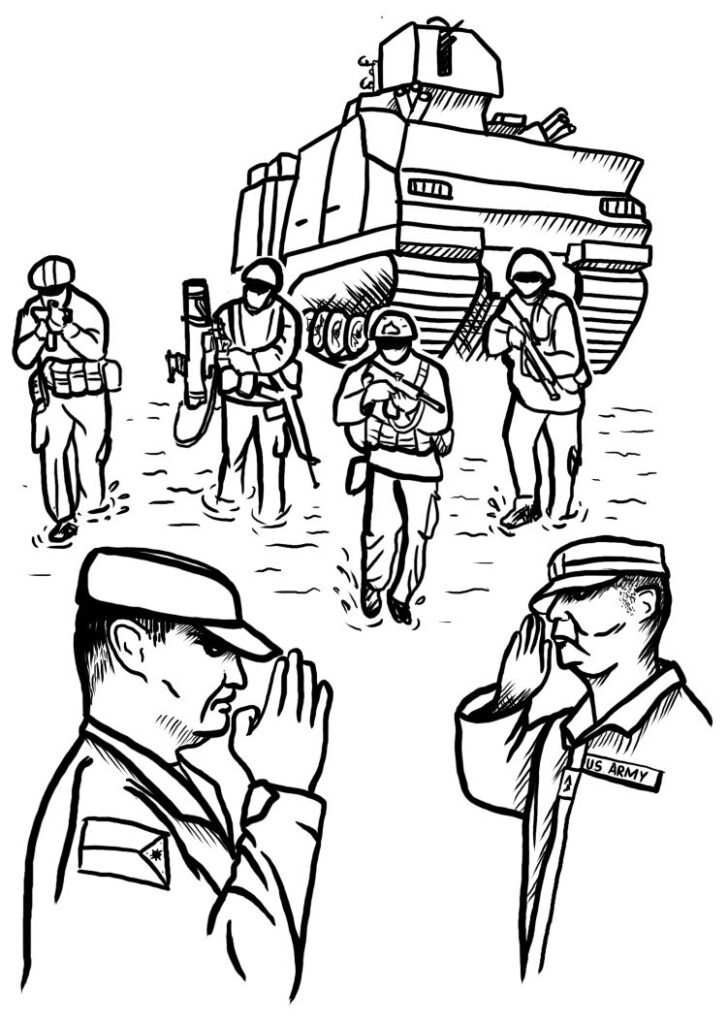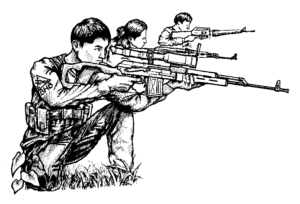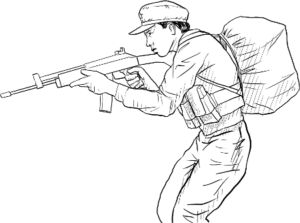Non-stop US war preparations in Asia


The US is steadily expanding its military presence in Asia, amid a potentially broader Middle East armed conflict, and the already prolonged proxy war it waged in Ukraine against Russia.
In the Philippines, the US is tightening its control of the Armed Forces of the Philippines through a series of wargames and permanent positioning of troops and military equipment on the country’s land and seas. At any given day, its large ships carrying drones, warplanes and thousands of troops are found within Philippine territorial seas or adjacent seas under the veil of “freedom of navigation operations.”
The US staged at least 12 large wargames this year with the Philippine military in collusion with the Marcos regime. These do not yet include the equally big, if not bigger unilateral, bilateral and multilateral wargames conducted in the country’s sovereign waters without the participation, authority or even knowledge of the Philippine puppet state.
The US mobilizes not only its own troops in wargames, but also allied troops from Europe, North America and Asia. On land, a total of 40,000 troopers participated in US wargames. The biggest of these is Balikatan 2023, where 12,200 American troopers (out of a total of 17,600) were involved in artillery shelling, aerial bombings, missile launches, attack exercises and more.
These are part of the 496 agreed US military activities in the country for 2023. Thus, the US conducts military activities and civil-military operations all year long with AFP forces and machinery under full US military control.
To sustain an increasing number of American troopers, “EDCA sites,” or bases and military facilities where the US has extra-territorial rights, are undergoing full-blast repairs. At least 15 facilities of 32 approved projects in these bases are being hastily completed by AFP minions. The latest is the completion of the 3-kilometer airstrip at Pampanga’s Basa Airbase.
Sixty-three “new facilities” were even added, based on the September meeting of Mutual Defense Board-Security Engagement Board. It also set the launching of more than 500 war games and other military activities for 2024. At the same time, the two states announced the addition of bases to the existing nine “EDCA sites.”
“Attack forces” against China
In September, the US announced the deployment of the Marine Rotational Force—Southeast Asia (MRF-SEA), a task force assigned to launch “back-to-back” wargames in the region. It launched Sama-Sama 2023 which ran for 12 days in October and attended by over 1,000 troopers from the US, the Philippines, Australia, Canada, France, Japan, Malaysia and the United Kingdom.
Since November 9, it launched Kamandag 7 in Palawan, Zamboanga, Tawi-Tawi and Batanes, with 3,000 troopers from the Philippines, US, South Korea and Japan participating. Before this, the US conducted in the Philippine Sea the 5-day Multi-Large Deck Event starting November 4, a wargames excluding AFP participation.
The US deployed the MRF-SEA for the second year to serve as “forward-positioned” or advanced US troops in Southeast Asia. It uses the legitimate grievance of Filipinos against China’s aggression in the West Philippine Sea to position large number of troops within the country’s territory.
Apart from the wargames in Philippine territories, MRF-SEA conducted the Cooperation Afloat Readiness and Training in Brunei, Marine Exercise in Indonesia, and Exercise Valiant Mark in Singapore. These wargames are focused mainly on training US Marines, “in tandem” with “local armies,” to become the US Navy’s attack force or strike force. This is in accordance with the US Marine Corps’s Force Design 2030 aiming to prepare such units for a naval war against China which the US foresees.










